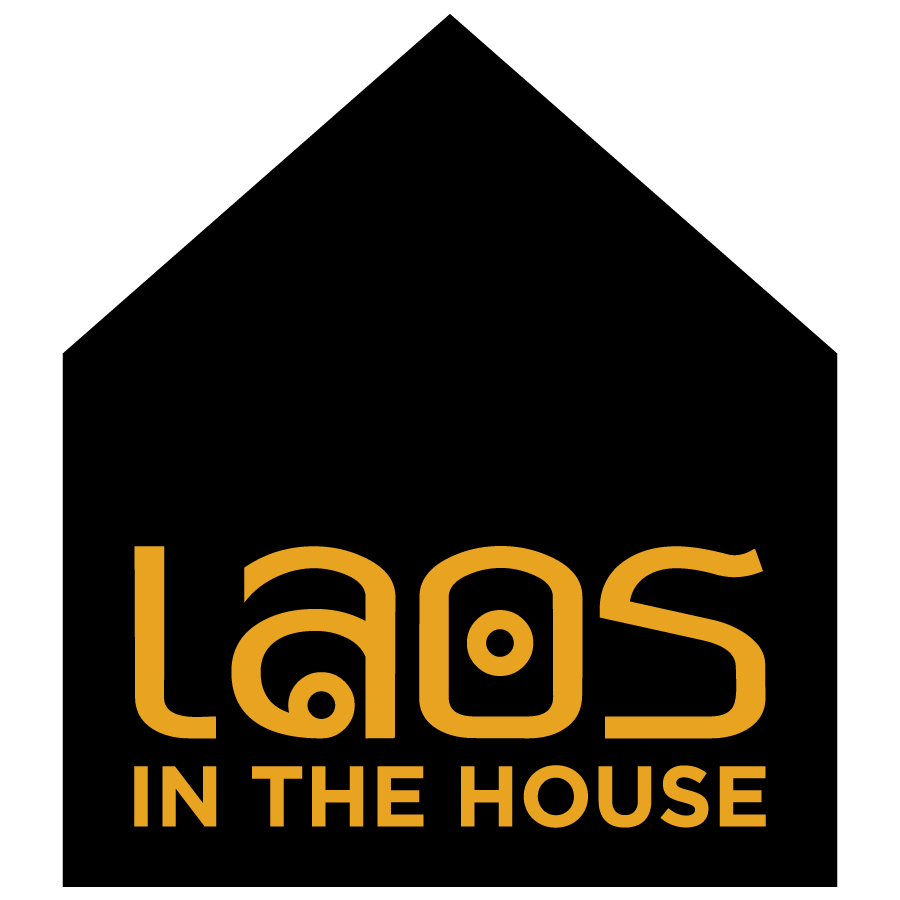Catzie Vilayphonh was born in a refugee camp after her family fled the war in Laos, leaving behind their world before America. She now dedicates her life to making sure others in her community understand and celebrate where they come from.
Across the room… are two geodesic domes built by Traction Company, an artist collective based in West Philadelphia, modeled on wats, the style of Buddhist temple found in Thailand, Laos, and Cambodia. Philadelphia, since the 1970s, has been a destination for Southeast Asian refugees, and to this day defends its status as a Sanctuary City.
Within the smaller of the domes is a table and stool, along with slips of paper and an invitation to Lao visitors to write about which state they moved to first, what they remember about their first day of school, as well as whether or not they’d ever been sent to prison camp. Although the responses are ensconced in a box on the table, the questions should give visitors pause to reflect on their own life experiences.”
A new project from Laos in the House, a local arts and events organization for Lao Americans, has created a physical representation of a sanctuary in the form of a large walk-in dome for Lao American refugees to tell their stories through audio and visual recording. The dome… will be traveling to several spaces and events as part of the Philadelphia Assembled initiative.
Food for (serious) thought…In the case of Vilayphonh, born in a refugee camp, she was immediately drawn to the theme of survival. The dish she chose to showcase in this project is called, “mieng”, a very traditional dish that’s not even routinely served in Laotian restaurants. Vilayphonh explained that the process of making it exemplifies survival as the rice goes through many stages and transformations before reaching its final form as "mieng".
"Turning our attention to the dazzling mural by Boon Vong at the center of the show, we are introduced to the clothing of Lao traditional dance. Theatrical dance is a staple of Southeast Asian culture, with dramatic stage performances playing out historical legends through movement, song and ornate costumes. This larger-than-life figure shows a young woman dressed in Kinnaly attire against a bright, sky blue field. Seen at such large proportions, the details are all the more visible, the bisected dancer's outfit unfurling beneath her raised arm. Capturing the style and poise of these classical Lao forms, this artwork is all but a teaser for a full-fledged production of this kind, and it surely leaves visitors wanting more."
"A parade with seven princesses and a king's severed head. It's not Game of Thrones, it's Lao New Year."
"Among the colors, haunting memories of 'Secret War'... the exhibit is a visceral lesson in how America's war in Vietnam crept into neighboring Laos and other parts of Southeast Asia."
"It is not necessarily so that the biggest communities are where the biggest voices come from," Bryan Thao Worra said. "It's precisely the smaller communities where we have seen the best work emerge, asking the classic questions: Who am I? Where am I from? How did I get here?"
As a poet and spoken word artist, Vilayphonh, 31, aims to create a feeling of identity among Lao Americans in Philly and explain the mass exodus from Laos through a writing, performing and filmmaking workshop, entitled “Laos in the House.” She fears that if an intergenerational exchange doesn’t happen soon, aspects of Laotian culture will be lost forever.
"The dinner, in all of its splendor and celebratory spirit, is, really, a de facto component of the Laos in the House Project too... Food, embedded in daily life and customs, is as defining as any part of culture - as the Songkran dinner will undoubtedly evoke food memories about a time and place, back in Laos where folks smelled the same smells, tasted the same flavors, when village life thrived, and when normalcy, seeming like an alien force once the bombs began to fall, still ruled. Or, maybe, food, like a life force, was something that made living bearable and grounded it to a routine that buffered the suffering that followed."
There aren’t any symbolic foods or traditions that usher in wealth and good luck, nor are there sound-alike ingredients for gold and long life. A practical people, Laotians eat everyday foods to ring in the new year. “There’s no one thing that we must eat,” says Catzie. “We’ll just eat everything that we like.”
-- Pat Tanumihardja, The Asian Grandmothers Cookbook—Home Cooking from Asian American Kitchens
"Everybodyyyy! Laos in the House! It's just fun to say."

